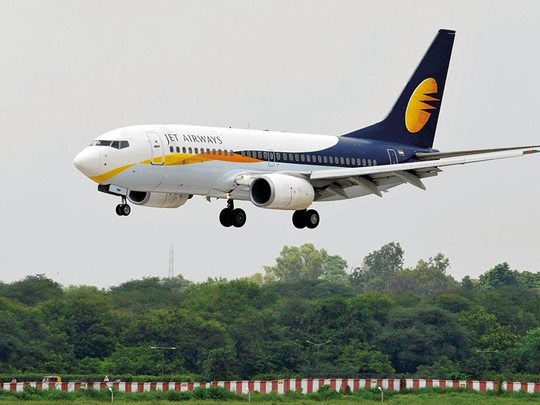
Mumbai: At least 30 passengers on a Jet Airways Mumbai-Jaipur flight suffered ear and nose bleeding due to low cabin pressure during the ascent here on Thursday, an official said.
The flight 9W-697 with 166 passengers and five crew, was forced to return back to Mumbai shortly after take-off, said a Jet Airways spokesperson.
Panic situation due to technical fault in @jetairways 9W 0697 going from Mumbai to Jaipur. Flt return back to Mumbai after 45 mts. All passengers are safe including me. pic.twitter.com/lnOaFbcaps
— Darshak Hathi (@DarshakHathi) September 20, 2018
Several passengers complained of severe headaches and at least 30 reported bleeding from nose and ears and were immediately administered first-aid by a team of doctors at the airport.
Airline sources said that the incident may have happened after the crew reportedly missed activating what is called a 'bleed switch' before take-off, leading to the disturbance in the cabin pressure with oxygen masks getting deployed.
Taranbir, we completely understand your predicament and we sincerely regret the inconvenience caused. Please refer to our official statement. pic.twitter.com/bQSacYNdOi
— Jet Airways (@jetairways) September 20, 2018
The Jet Airways said it has taken the concerned crew off-duty pending a probe into the incident. An investigation by the Directorate-General of Civil Aviation (DGCA) was also launched.
About 30 of the 166 flyers aboard the Boeing Co. 737 aircraft from Mumbai to Jaipur suffered bleeding in their noses, and some in their ears, and forced the plane to return, according to a statement from the Directorate General of Civil Aviation in New Delhi. The carrier said it has taken the cockpit crew off duty pending an investigation into the incident.
"Jet Airways regrets the inconvenience caused to its guests," it said in a Twitter post.
What is the bleed switch for?
On takeoff and during flights, air goes through the aircraft’s turbine engines and a series of compressors. This process of air passage increases the temperature and pressure of the air passing through – which then mixes with fuel to ignite it for take-off and during the flight. Some parts of this highly pressurised air is taken out from the engines through valves or ducting to other parts of the aircraft. This air is called ‘engine bleed air’.
Most modern aircrafts used ‘bleed air’ for a variety of purposes.
Bleed air is highly-pressurised around 40 psi (pound-force per square inch), so it can help maintainoptimal air cabin pressure throughout the flight. Air inside a plane flying at cruising altitude (about 36,000 feet above sea level) is usually pressurised to simulate conditions at about 8,000 feet, a healthy level although still high enough to inhibit the rate at which oxygen is carried in the blood.
Since it is very hot (200 - 250 degrees Celcius), air-conditioning systems within the aircraft help cool it down before being combined with recirculated cabin air.
Bleed air, owing to its high temperatures, also helps to make sure that key engine components and wings are protected from ice accumulation.
Health effects of lack of proper bleed air systems
Rapid decreases in air pressure cause air inside the middle ear and sinuses to escape the body in an attempt to equalise with the surrounding environment - usually experienced as a popping sensation. Sustained low pressure can lead air to escape too forcefully and cause headaches, stomach pain and bleeding from the nose and ears.
- Inputs from IANS and Bloomberg












